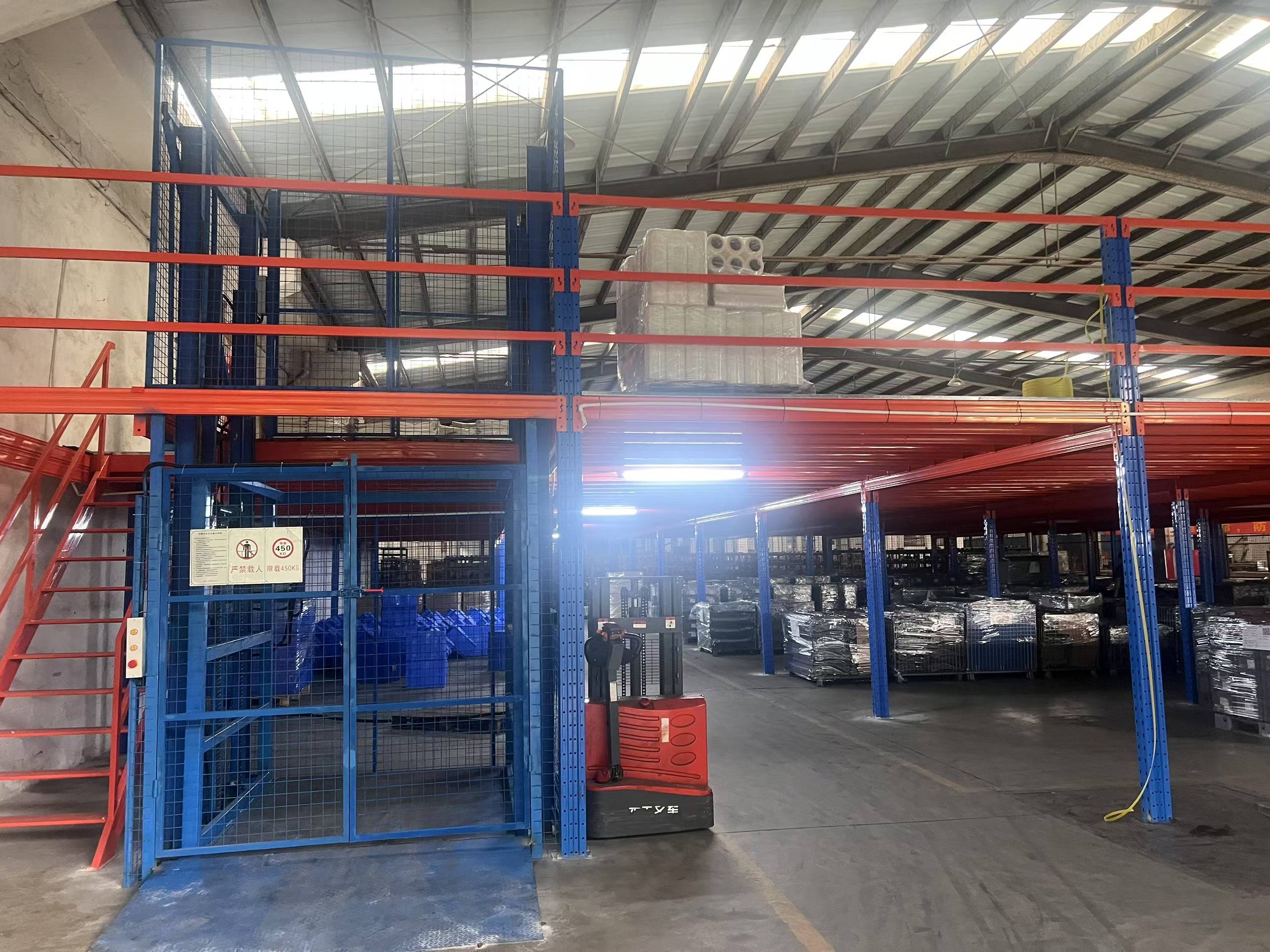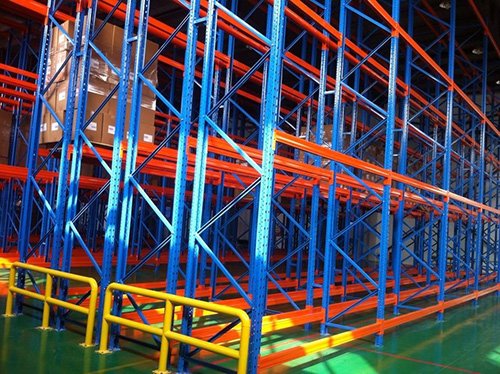In the world of industrial storage and warehouse management, space is a premium commodity. Maximizing every square foot without compromising safety or accessibility is the ultimate goal for logistics managers and operations planners. Among the various storage solutions available, back to back pallet racking stands out as a highly effective and widely adopted system for dense storage. This configuration is a fundamental component of many high-performing warehouses. But what exactly is it, and is it the right choice for your facility? This article delves deep into the structure, benefits, and critical considerations of implementing a back to back pallet racking system.

At its core, back to back pallet racking is a specific configuration where two rows of selective pallet racking are positioned with their backs facing each other. Unlike single-row racking that stands independently against a wall or with space behind it, this system pairs rows together. The upright frames of the two rows are typically connected by row spacers—horizontal braces that run between the racks at the base and sometimes higher up. This connection creates a stable, unified structure that eliminates the need for an aisle between the two rows, thereby significantly increasing storage density. The most common application of back to back pallet racking is in creating double-deep storage, where pallets are stored two deep on each side of the aisle.
A robust back to back pallet racking system relies on several key components working in harmony. Understanding these parts is crucial for proper design and safety.
Upright Frames: These are the vertical columns that form the skeleton of the racking system. They have punched holes to allow for the adjustment of beam levels.
Beams: Horizontal members that connect to the upright frames, creating the shelves on which pallets rest.
Row Spacers: This is the defining component of a back to back pallet racking setup. These structural connectors bolt the two opposing upright frames together, maintaining the correct distance between the rows and ensuring overall stability. The size and strength of the row spacers are critical for the system's integrity.
Wire Mesh Decking or Pallet Supports: These are used to support the pallets, especially when they are not fully supported by the beams alone, as is the case in double-deep storage.
Shims and Anchors: Shims are used to level the upright frames on uneven floors, while anchors (concrete anchors) secure the entire structure to the warehouse floor, preventing tipping.
The design must account for the load dimensions, weights, and the type of material handling equipment used, such as reach trucks or counterbalance forklifts.
The popularity of back to back pallet racking is driven by several compelling advantages that directly impact a warehouse's bottom line.
Maximized Storage Density: This is the most significant benefit. By eliminating an entire aisle, you can store more pallets in the same footprint. This is especially valuable in facilities where space is limited or rental costs are high.
Improved Space Utilization: It allows for a more efficient use of the warehouse cube. By creating deeper storage lanes, you reduce the "wasted" space of numerous aisles, leading to a higher storage capacity.
Cost-Effectiveness: While the initial investment might be similar to single-row racking, the cost per stored pallet is often lower because you are storing more units within the same area. This leads to a better return on investment over time.
Structural Stability: When properly installed with adequate row spacers and floor anchoring, the back to back pallet racking configuration creates a very stable structure, as the two rows support each other.

While advantageous, a back to back pallet racking system is not a one-size-fits-all solution. It comes with inherent operational characteristics that must be carefully managed.
Inventory Accessibility (LIFO vs. FIFO): This is the most critical consideration. Standard back to back pallet racking typically operates on a Last-In, First-Out (LIFO) principle. The pallet stored last in a lane will be the first one retrieved. This is unsuitable for inventory that is date-sensitive or requires strict First-In, First-Out (FIFO) rotation, such as perishable goods. Solutions for FIFO in deep storage exist but are more complex and costly.
Requirement for Specialized Equipment: To access the second pallet in a lane, standard forklifts are insufficient. Operators require specialized equipment like reach trucks, which are designed to extend into the racking lane to retrieve and store pallets. This represents an additional capital expenditure if such equipment is not already available.
Potential for Damage: The process of placing and retrieving pallets from deep within a lane increases the risk of incidental contact with the racking structure or the adjacent pallet. This necessitates highly skilled operators and can lead to higher maintenance costs for both the racking and the forklifts.
Reduced Selectivity: Unlike selective racking where every pallet is immediately accessible from the aisle, back to back pallet racking reduces selectivity. If a specific pallet is buried behind another, the front pallet must be moved first, which can slow down order-picking operations for specific SKUs.
Safety is paramount in any warehouse environment. A back to back pallet racking system introduces specific safety concerns that must be addressed proactively.
What are the common causes of failure? The most common issues include:
Improper Loading: Exceeding the specified load capacity per beam level or placing unevenly distributed loads.
Forklift Impact: Repeated collisions with upright frames or row spacers can weaken the structural integrity over time. Corner guards and column protectors are essential.
Incorrect Installation: Failure to properly install row spacers, anchor the system to the floor, or level the uprights can lead to catastrophic collapse.
Poor Pallet Quality: Damaged pallets can fail when stored in a deep lane, causing a chain reaction of falling loads.
How often should inspections be conducted? OSHA and other regulatory bodies recommend regular inspections. A formal inspection by a qualified engineer should be conducted annually, while visual inspections by warehouse staff should be done on a weekly or even daily basis. Any signs of bending, cracking, or damage must be reported and addressed immediately.
What about load balancing? It is crucial to ensure that the weight is evenly distributed across the entire back to back pallet racking structure. Heavier loads should be placed on the lower levels, and the overall design must be calculated by a storage engineer to prevent overloading.
Deciding whether to implement a back to back pallet racking system requires a thorough analysis of your specific needs. This configuration is an excellent choice if:
You have high-volume storage for a limited number of SKUs.
Your inventory turnover is high and not sensitive to LIFO rotation.
You are operating in a space-constrained facility and need to maximize storage capacity.
You already have, or are willing to invest in, the necessary material handling equipment like reach trucks.
Conversely, it may be less suitable if you handle a wide variety of SKUs with individual picking requirements, manage FIFO-sensitive products, or rely primarily on counterbalance forklifts.
In conclusion, back to back pallet racking is a powerful tool for optimizing warehouse space. Its ability to dramatically increase storage density makes it a go-to solution for many industries. However, a successful implementation hinges on a clear understanding of its operational limitations, a commitment to rigorous safety protocols, and a careful assessment of your inventory profile. By weighing the advantages against the challenges, you can make an informed decision on whether this dense storage solution will drive efficiency in your warehouse.
 Wechat
Wechat
 Whatsapp
Whatsapp